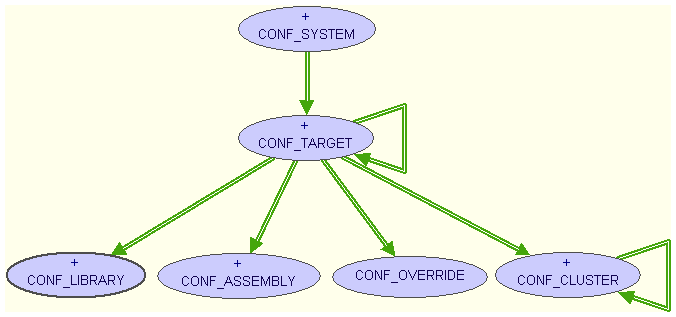Difference between revisions of "ConfigurationParserLibrary"
(→CONF_SYSTEM) |
(→CONF_SYSTEM) |
||
| Line 4: | Line 4: | ||
== CONF_SYSTEM == | == CONF_SYSTEM == | ||
Every configuration file describes one CONF_SYSTEM and has one or more CONF_TARGET associated. Normally a CONF_SYSTEM object is generated by parsing a configuration file with CONF_LOAD. | Every configuration file describes one CONF_SYSTEM and has one or more CONF_TARGET associated. Normally a CONF_SYSTEM object is generated by parsing a configuration file with CONF_LOAD. | ||
| − | + | ||
| − | + | ||
| − | + | ||
| − | + | ||
| − | + | ||
| − | + | ||
| − | + | ||
| − | + | ||
| − | + | ||
| − | + | ||
| − | + | ||
| − | + | ||
| − | + | ||
| − | + | ||
| − | + | ||
| − | + | ||
| − | + | ||
=== Implementation === | === Implementation === | ||
Revision as of 13:22, 30 October 2006
Contents
General
The basic layout of a configuration system is a system that has multiple targets (which may inherit from each other), every target can have some libraries, assemblies override clusters and normal clusters. Clusters can have sub clusters.
CONF_SYSTEM
Every configuration file describes one CONF_SYSTEM and has one or more CONF_TARGET associated. Normally a CONF_SYSTEM object is generated by parsing a configuration file with CONF_LOAD.


